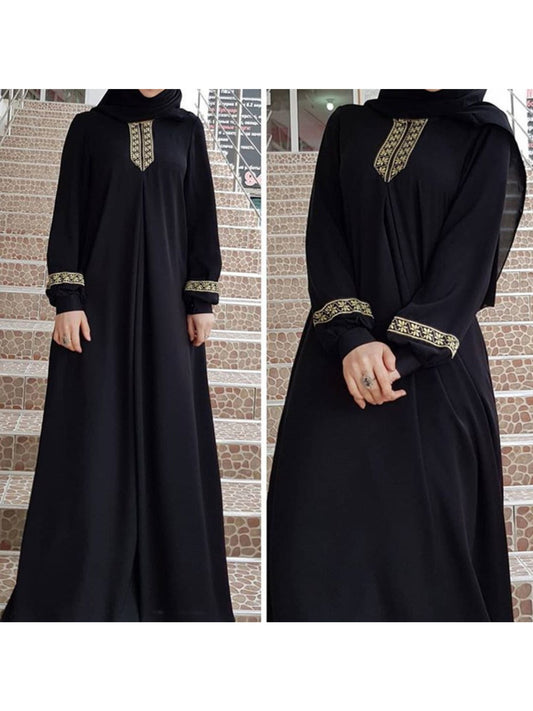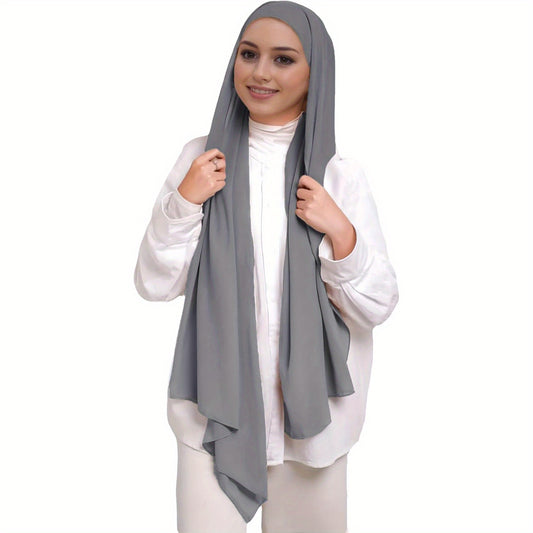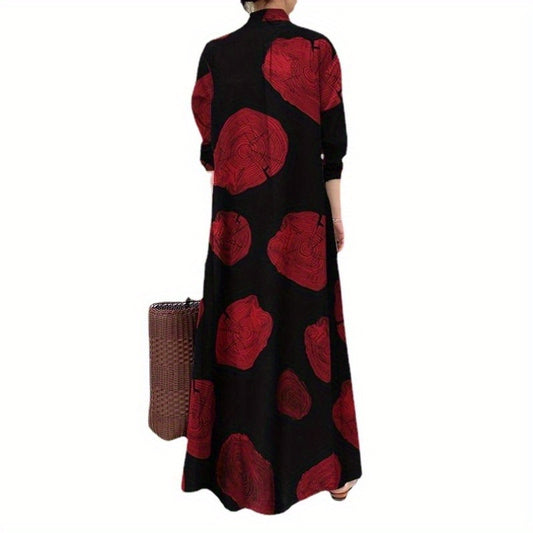About Cotton Abaya
The Timeless Elegance Of Cotton Abayas
The abaya is not merely a garment but a living heritage. For centuries, it has symbolized modesty, identity, and dignity across cultures. Over time, it has evolved into a versatile garment that embraces tradition while adapting to modern needs. Among the fabrics that define the abaya, cotton stands out for its practicality and elegance.
Cotton abayas combine comfort with sophistication. They are breathable, durable, and adaptable to different climates, which makes them ideal for daily wear as well as formal occasions. They protect modesty without compromising elegance, embodying both heritage and modernity.
Through carefully curated collections, Fabulive honors this balance by showcasing cotton abayas that retain cultural depth while responding to contemporary design aesthetics.
Historical Context Of Abayas
The origins of the abaya trace back to the Arabian Peninsula, where loose garments provided protection from desert heat while aligning with modest traditions. With the spread of Islam, abayas became a common attire across North Africa, the Middle East, and South Asia, each region adding its own cultural interpretations.
In earlier times, abayas were woven from basic black textiles. Cotton gradually emerged as a preferred fabric because it was lighter, breathable, and adaptable for dyeing or embroidery. By the 20th century, cotton abayas gained recognition beyond functional wear, entering the realm of fashion. Embellishments, new cuts, and creative tailoring elevated cotton abayas into garments of identity and artistry.
The Significance Of Cotton
Cotton is valued globally as one of the most versatile and sustainable natural fibers. Its role in abayas reflects these qualities:
-
Breathability: Cotton absorbs moisture and allows air circulation, keeping the body cool.
-
Durability: Unlike fragile fabrics, cotton withstands frequent wear and washing.
-
Versatility: Cotton suits both lightweight summer abayas and layered winter versions.
-
Absorbency: Cotton holds dyes and embroidery colors vividly, enabling creative designs.
-
Comfort: Gentle on the skin, cotton abayas are easy to wear for extended hours.
For these reasons, cotton abayas remain highly practical while also offering artistic scope for designers.
Types Of Cotton Abayas
The variety of cotton abayas reflects both cultural tradition and fashion innovation.
-
Classic Black Cotton Abayas: Simple, dignified, and timeless.
-
Colored Cotton Abayas: Navy, olive, beige, or maroon, providing variation for everyday wear.
-
Embroidered Cotton Abayas: Cotton holds needlework beautifully, allowing detailed designs.
-
Open-Front Cotton Abayas: Styled like overcoats, often paired with Western outfits.
-
Summer Cotton Abayas: Lightweight and breathable, essential for warm climates.
-
Layered Cotton Abayas: Thicker cotton styles for autumn and winter.
Each type highlights the adaptability of cotton, making abayas versatile across contexts.
Artistic Beauty Of Cotton Textiles
The artistry of cotton abayas lies in the textile itself. Cotton provides a natural canvas for craftsmanship.
Dyeing Traditions
Cotton absorbs color brilliantly, which is why natural and synthetic dyes produce vibrant results. Indigo, madder, turmeric, and henna have historically been used to dye cotton fabrics, influencing abaya colors in various regions.
Weaving Techniques
From Egyptian cotton to Indian handloom fabrics, cotton weaving carries centuries of heritage. Abayas made from handwoven cotton bring texture and depth, while machine-woven cotton allows uniformity and affordability.
Embroidery On Cotton
Cotton supports embroidery stitches, making it perfect for abayas adorned with threadwork. Palestinian tatreez, Kashmiri embroidery, and Arabic calligraphic motifs transform simple cotton into wearable art.
Minimalism
The beauty of cotton abayas also lies in minimalism. Plain cotton abayas highlight clean silhouettes, focusing on texture and drape instead of embellishment.
This artistry makes cotton abayas more than garments—they are moving canvases that display textile heritage.
Cultural Case Studies
Gulf Region
In the Gulf, cotton abayas are practical in desert climates. While silk and crepe are used for special occasions, everyday cotton abayas remain essential. Subtle embroidery or beadwork often adds refinement.
South Asia
In Pakistan and India, cotton abayas incorporate local textile arts. Block printing, chikankari embroidery, and tie-dye traditions merge cultural identity with modest fashion. Brightly colored cotton abayas reflect the region’s love of vibrancy.
North Africa
Cotton abayas in Morocco and Tunisia are lightweight, often decorated with bold patterns. They are worn as casual garments but also layered with heavier fabrics for special events.
Western Adaptations
In Europe and North America, cotton abayas are gaining popularity beyond Muslim communities. Styled as fashion coats or dresses, they reflect modest fashion’s global rise. Paired with belts or sneakers, they fit seamlessly into contemporary wardrobes.
These case studies show how cotton abayas adapt to local traditions while remaining globally relevant.
The Rising Popularity Of Cotton Abayas Globally
Cotton abayas are increasingly visible on international platforms.
Modest Fashion Industry Growth
The modest fashion market has grown into a multibillion-dollar industry. Cotton abayas, practical and stylish, are central to this movement.
Celebrity And Influencer Endorsement
Global figures, from Middle Eastern royalty to Western influencers, wear cotton abayas in public appearances. Their visibility has elevated abayas from regional garments to international symbols of style.
Fashion Weeks
Modest fashion shows in Dubai, London, and New York have featured cotton abayas, highlighting their elegance in both traditional and modern forms.
Everyday Fashion
Social media platforms like Instagram and TikTok show influencers styling cotton abayas with handbags, jewelry, or modern footwear. Their appeal now reaches women seeking comfort, elegance, and modesty worldwide.
Cotton Abayas In Celebrity And Influencer Fashion
Celebrity culture has played a pivotal role in popularizing cotton abayas.
-
Queen Rania of Jordan: Known for elegant cotton abayas with embroidered details, blending modern fashion with heritage.
-
Halima Aden: The Somali-American model has worn cotton abayas at international events, normalizing them in high fashion.
-
Huda Kattan: The beauty entrepreneur frequently showcases cotton abayas styled with luxury accessories.
-
Western Influencers: Modest fashion bloggers in Europe and North America feature cotton abayas as versatile outerwear.
This growing presence in celebrity fashion reinforces cotton abayas as not only culturally significant but also globally aspirational.
Maintenance And Longevity
Cotton abayas are low-maintenance but benefit from care:
-
Wash in cold water with gentle detergent.
-
Avoid bleach to preserve colors.
-
Iron lightly for a crisp finish.
-
Store on hangers to maintain structure.
-
Use breathable garment bags to prevent dust accumulation.
These steps extend the lifespan of cotton abayas, making them reliable daily wear garments.
Psychological And Social Impact
Cotton abayas hold psychological importance beyond fashion.
-
Empowerment: Modest yet stylish clothing builds confidence.
-
Connection: Wearing cotton abayas connects individuals to heritage.
-
Comfort: Breathable fabric enhances physical ease, improving self-assurance.
-
Inclusivity: As abayas gain global traction, they represent cultural respect and acceptance.
Thus, cotton abayas play roles both aesthetic and symbolic.
The Role Of Fabulive
Fabulive’s cotton abaya collection captures the harmony of tradition and modern design. Its range showcases cotton’s versatility, from minimalist daily wear to embroidered statement pieces. By focusing on craftsmanship, comfort, and durability, Fabulive ensures that cotton abayas remain accessible and elegant for women worldwide.
Future Of Cotton Abayas
The future points to innovation while respecting tradition:
-
Organic Cotton: Eco-friendly production methods.
-
Smart Textiles: Wrinkle-free or temperature-regulating blends.
-
Customization: Personalized embroidery or tailored cuts.
-
Hybrid Fashion: Integration of abayas with trench coats, maxi dresses, and global fashion trends.
As the fashion industry embraces sustainability and inclusivity, cotton abayas will remain central, evolving with modern demands while honoring cultural legacy.
Conclusion
Cotton abayas represent a fusion of modesty, comfort, and beauty. They embody centuries of cultural tradition while adapting to contemporary needs. From the Gulf to North Africa, South Asia to Western cities, cotton abayas remain timeless in their appeal. Their breathability, versatility, and artistry make them essential garments that are both practical and elegant.
Through its carefully curated collections, Fabulive provides cotton abayas that exemplify durability, comfort, and sophistication. Each piece becomes more than a garment—it is a story of tradition, empowerment, and global style.
Customer Reviews
-
Sophia Turner, USA: Comfortable, lightweight, and elegant. A perfect everyday abaya. ⭐⭐⭐⭐⭐
-
Amira Al-Farsi, UAE: The embroidery on my cotton abaya is exquisite—practical and stylish. ⭐⭐⭐⭐
-
James Cole, UK: Bought one for my wife; she loves the comfort and quality. ⭐⭐⭐⭐⭐
-
Elena Müller, Germany: Breathable fabric that works well in both summer and winter. ⭐⭐⭐⭐
-
Hannah Wilson, Canada: Simple, elegant, and easy to style with accessories. ⭐⭐⭐⭐⭐
-
Olivia Brown, Australia: Perfect for travel—light, comfortable, and versatile. ⭐⭐⭐⭐
-
Fatima Al-Harthy, Oman: A beautiful balance of tradition and modern fashion. ⭐⭐⭐⭐⭐
-
Isabelle Dubois, France: Très chic! I wear mine both casually and for dinners. ⭐⭐⭐⭐
-
Ayesha Khan, Qatar: The cotton fabric is soft yet durable—truly impressive. ⭐⭐⭐⭐⭐
-
Michael Rossi, Italy: Gifted one to my sister; she appreciated the modest yet fashionable design. ⭐⭐⭐⭐






